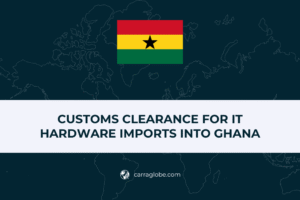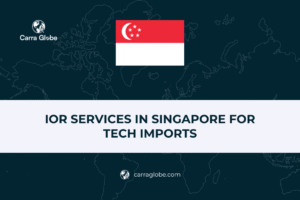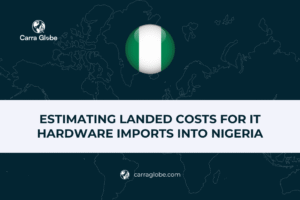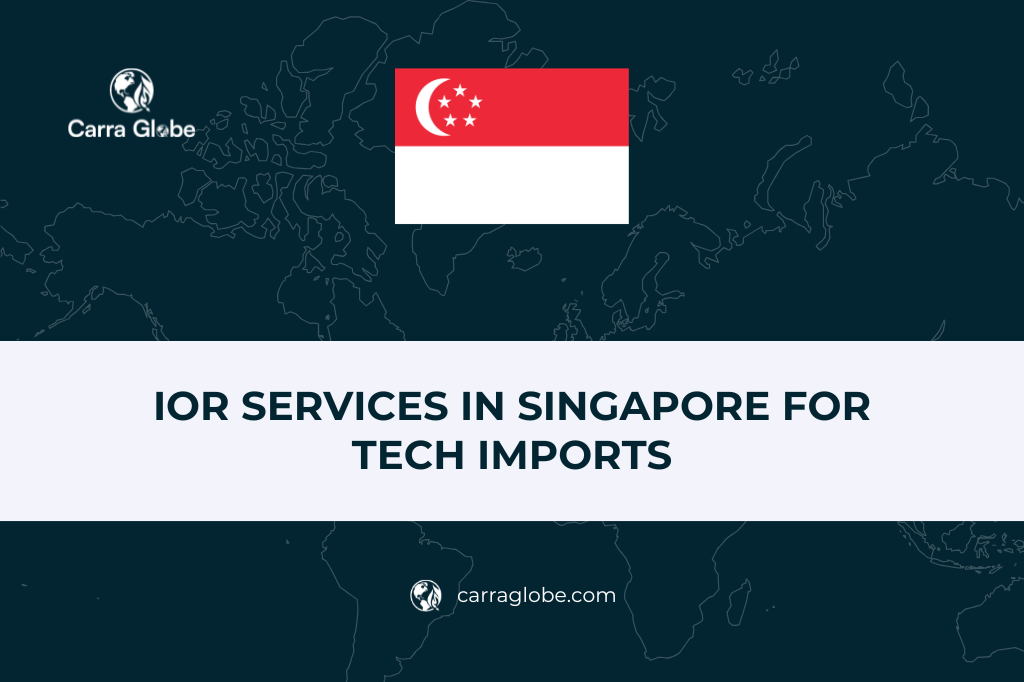Why Compliance Makes or Breaks IT Hardware Rollouts
Deploying servers, routers and other high-tech equipment across multiple countries is complicated enough without compliance headaches. Each border has its own classification codes, licensing rules, and paperwork requirements. Missing even one step can trigger delays, fines, or project overruns. This article shows the top five pitfalls companies face and how to avoid them. Learn more about Top 5 Compliance Pitfalls in Global IT Hardware Rollouts (and How to Avoid Them)
Pitfall 1: Misclassifying Equipment Under HS Codes
The Problem
Incorrect HS codes can result in overpaying duties, customs holds, or even seizure if the product falls under restricted categories.
How to Avoid It
Work with a partner like Carra Globe that tracks HS code updates globally and classifies equipment correctly before shipment.
(World Customs Organization – HS Nomenclature)
Pitfall 2: Missing Export or Import Licences
The Problem
Encrypted servers, satellite-linked devices and other dual-use equipment may require licences under regulations like the EAR or ITAR.
How to Avoid It
Check licensing requirements before shipment and use an Exporter or Importer of Record who can apply for and manage permits.
(BIS – Export Administration Regulations (EAR))
Pitfall 3: Incomplete or Inconsistent Paperwork
The Problem
Errors in invoices, packing lists or certificates of origin can trigger manual inspection, storage fees and delayed delivery.
How to Avoid It
Centralise documentation and have a single partner handle customs entries and paperwork. For more on why correct documentation matters, see our blog What Are the Record of Delivery Documents for Imports? which explains how accurate delivery records prevent disputes and delays.
Pitfall 4: Underestimating Duties and Taxes
The Problem
Without accurate landed cost forecasting, surprise duties and taxes can erode project margins and delay invoicing.
How to Avoid It
Use Delivered Duty Paid (DDP) services to lock in total landed cost up front. Carra Globe bundles DDP with compliance so duties, taxes and brokerage are handled before the shipment leaves origin.
Pitfall 5: Skipping End-to-End Handling for Sensitive Equipment
The Problem
Even when customs is cleared, equipment can be damaged or delayed between port and installation site if handled by multiple vendors.
How to Avoid It
Choose a partner that integrates freight forwarding with white glove delivery for secure, tracked, and careful transport to the final location. Carra Globe’s white glove delivery protocols protect sensitive hardware and keep timelines on track.
How Carra Globe Helps You Avoid All Five Pitfalls
Carra Globe combines HS code classification, Importer/Exporter of Record, Delivered Duty Paid (DDP), freight forwarding, global trade compliance and white glove delivery under one roof. We handle classification, permits, customs documentation and secure transport so your IT hardware arrives on time and is compliant. Our specialists stay up to date on regulatory changes so you can focus on growth rather than red tape.
Are you ready to protect your margins and speed up clearance on your next rollout?
Contact Carra Globe here to request a personalised compliance plan and landed cost estimate. We’ll map your shipment, identify risks, handle all permits and paperwork, coordinate freight forwarding and provide white glove delivery so your global IT expansion runs on time and on budget.
Frequently Asked Questions
Q1. Why are HS codes critical for IT hardware imports?
A1. They determine duties, taxes and whether special licences are required. Incorrect codes can trigger delays and fines.
Q2. How do export and import licences affect my rollout?
A2. Encrypted or dual-use equipment may require licences. Carra Globe applies for and manages these permits as your EOR/IOR.
Q3. What’s the advantage of DDP services?
A3. They lock in total landed cost and handle duties, taxes and customs brokerage before shipment leaves origin.
Q4. How does white glove delivery reduce risk?
A4. It ensures secure, tracked and careful transport of sensitive equipment from port to installation site.
Q5. Where can I learn more about delivery documents?
A5. See our blog What Are the Record of Delivery Documents for Imports for an in-depth explanation.












